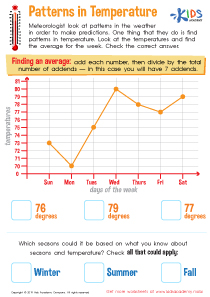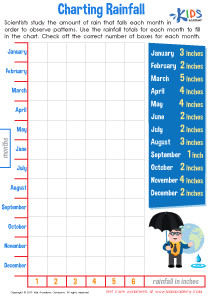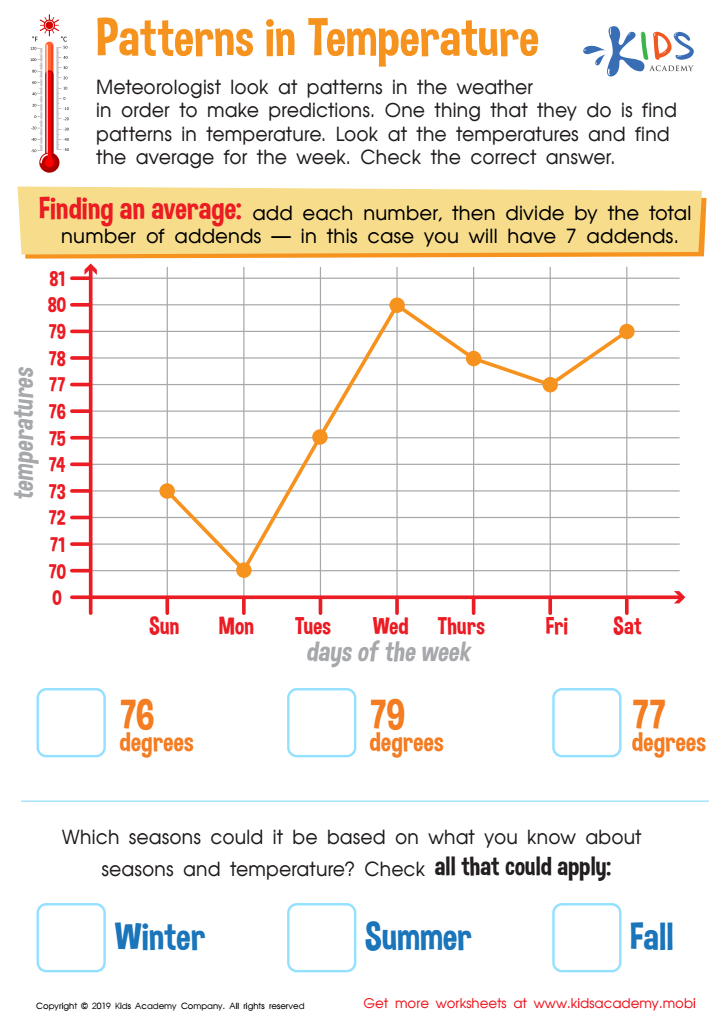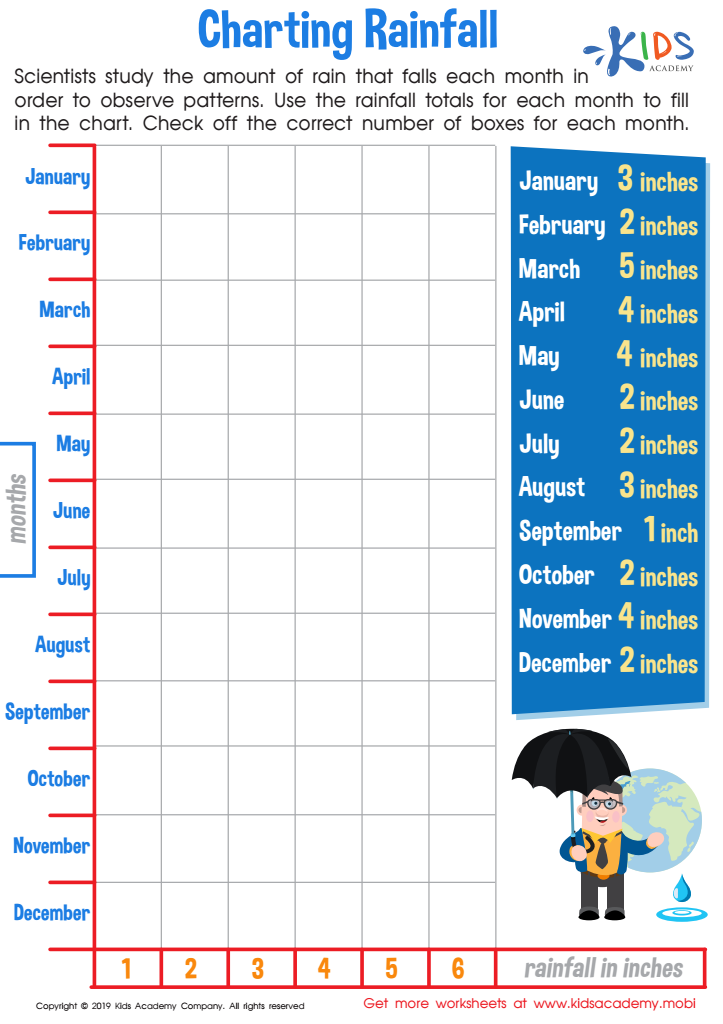Patterns in Weather - Lesson for Grade 3, Chapter - Weather
In the "Patterns in Weather" lesson, designed specifically for Grade 3 students within the Weather chapter of their Science unit, learners are set to embark on an insightful journey into the world of meteorology. Through engaging activities such as the Patterns in Temperature Worksheet and the Charting Rainfall Worksheet, students will develop a foundational understanding of how weather patterns are formed and observed.
Students will learn to identify and analyze patterns in temperature changes over days, weeks, and seasons, discovering the factors that contribute to these variations. This understanding is crucial for developing a sense of how the Earth's atmosphere functions and affects our daily lives. Additionally, by charting rainfall, students will explore the distribution and frequency of precipitation, gaining insights into the water cycle and its significance in maintaining ecological balance.
Understanding weather patterns is important for several reasons. It helps students grasp essential concepts of Earth Sciences, fostering a curiosity about the natural world. Moreover, recognizing and interpreting weather patterns is a skill that aids in personal and community preparedness for weather-related phenomena, enhancing students' ability to make informed decisions in the context of changing environmental conditions.


-
Activity 1 / Patterns in Temperature Worksheet
Reading and interpreting data from graphs and charts is an important skill for children as they go from learning to read to reading to learn. With this free worksheet about temperature patterns, they'll look at the patterns of temperatures for a time period and answer questions. There's a bonus in this worksheet in that it also gives them practice in learning about averages and how to find averages, as well as answering questions given in a multiple-choice format.
-
Activity 2 / Charting Rainfall Worksheet
Using charts to graph pieces of information is an important math skill that children need to develop in order to make sense of the world around them. With this rainfall PDF worksheet, they'll have the opportunity to be little statisticians themselves, charting the amount of rain that falls in each month and then using critical thinking skills to look for patterns in the rainfall. It's a great way to encourage data storage as well as analysis for bigger math concepts down the road.



